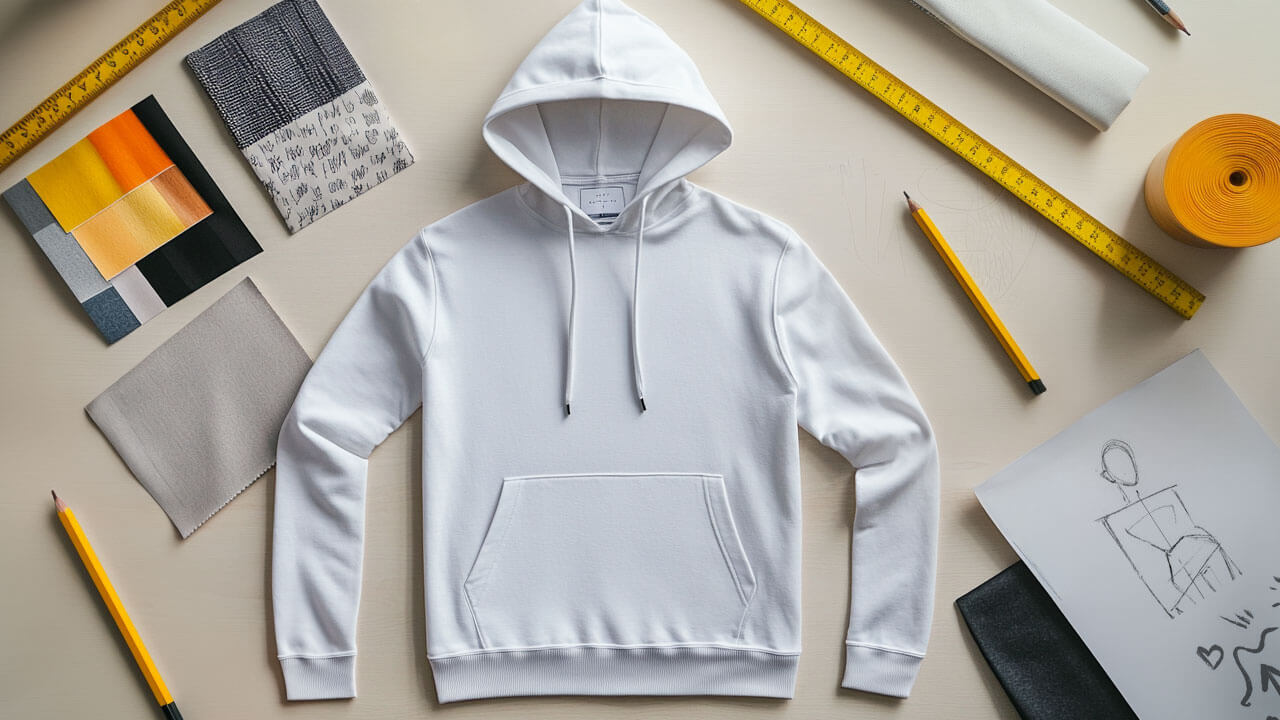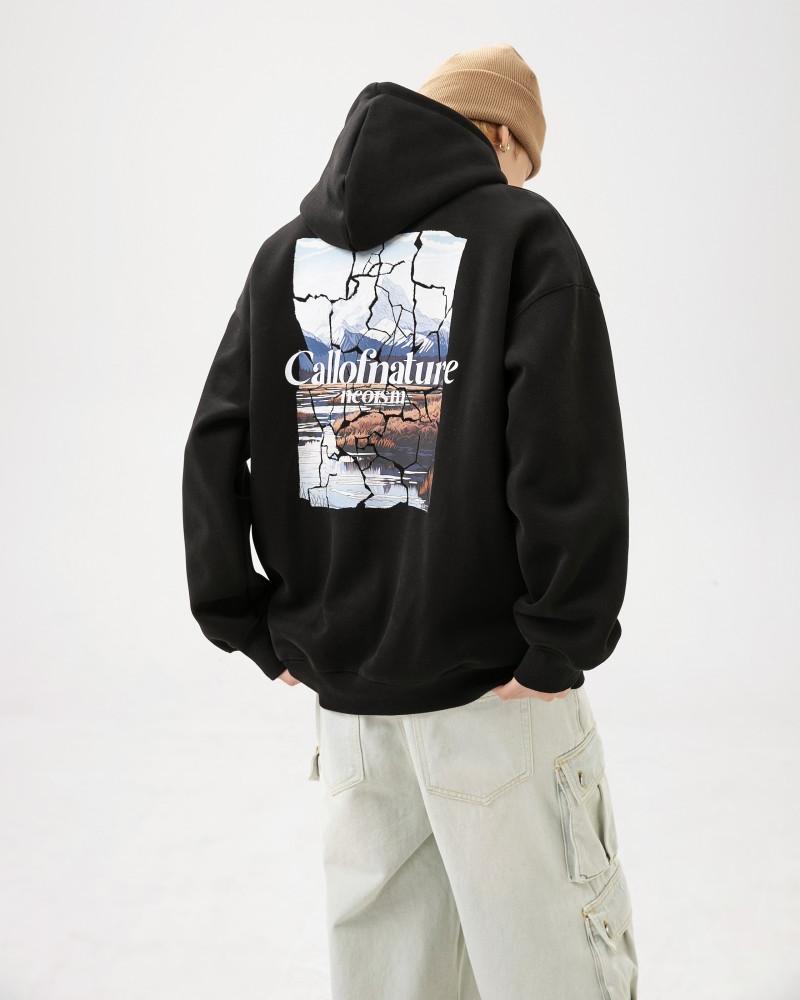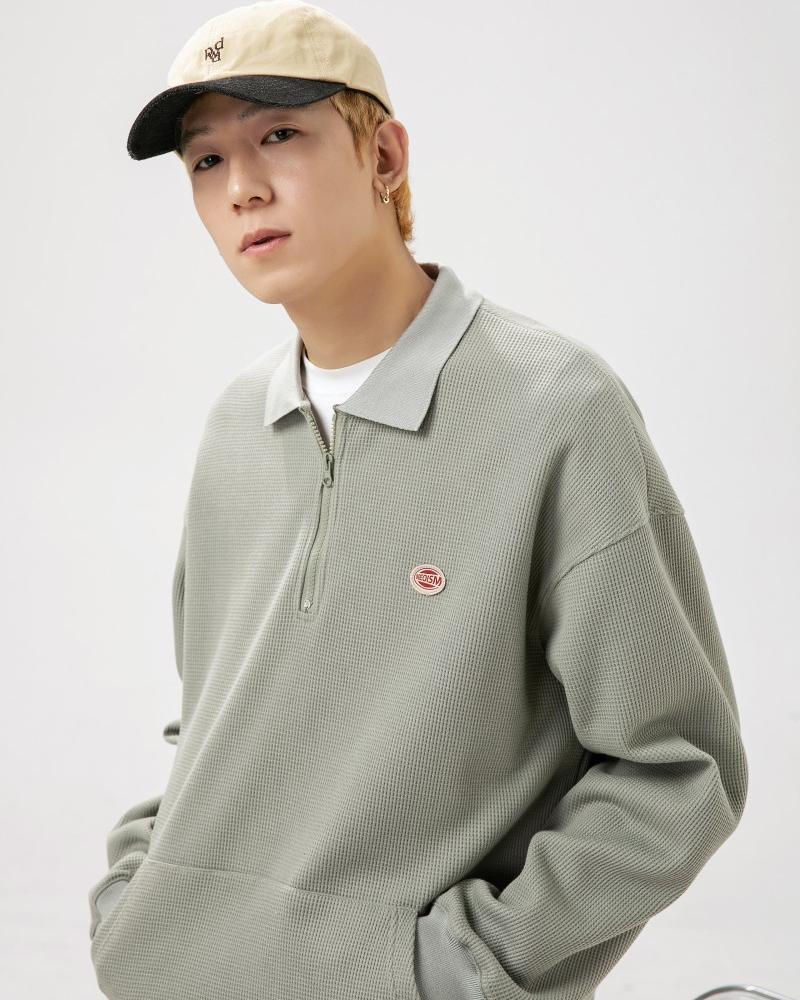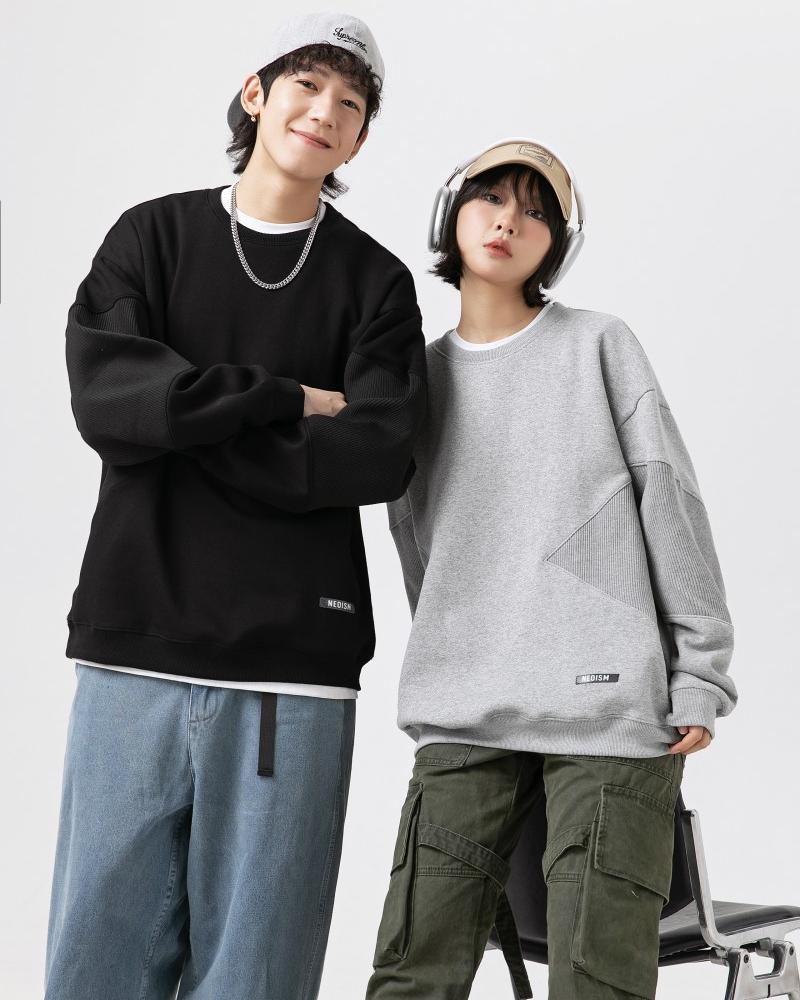-
No. 28, Zhanqian 1st Street, Liuhua Subdistrict, Yuexiu District, Guangzhou City

Drop shoulder T-shirt VS ordinary T-shirt
Table of Contents
Abstract
In today’s fashion industry, T-shirts as basic items have developed a variety of styles, among which the contrast between drop shoulder T-shirts and ordinary T-shirts is particularly significant. This article systematically analyzes the differences between the two through 10 core dimensions: 1) The difference in shoulder line design significantly affects the overall silhouette; 2) The pattern structure determines the comfort and style of wearing; 3) The difference in sleeve length and sleeve cage design; 4) Different fabric selection preferences; 5) Applicable occasions and style positioning; 6) Comparison of matching difficulty; 7) Differences in price ranges; 8) Complexity of production process; 9) Characteristics of target consumer groups; 10) Market popular cycle rules. Research data shows that the global drop shoulder T-shirt market size will reach US$7.8 billion in 2023, with an annual growth rate of 12.5% (Statista data), while ordinary T-shirts still maintain a market dominance of 56%. This article will help consumers, designers and merchants make more informed choices.
1. Shoulder line design: the fundamental difference in structural aesthetics
The most notable feature of a dropped shoulder T-shirt is its deliberately lowered shoulder line structure. Unlike ordinary T-shirts that precisely align the natural shoulder line, the shoulder seam of a dropped shoulder design is usually lowered by 5-8 cm and extends to the upper arm position. This design originated from the New York street culture in the 1980s, when hip-hop artists deliberately bought large-size T-shirts in pursuit of an oversized wearing effect. Modern fashion designers have transformed this demand into structural design, forming a signature dropped shoulder cut.
From an ergonomic point of view, the lowered shoulder line brings three major advantages:
- Increases freedom of movement by 30% (Journal of Clothing Engineering 2022 research data)
- Reduces discomfort caused by underarm friction
- Weakens the shoulder line and modifies shoulder defects
Typical case: In the 2023 spring and summer series of Japanese brand Yohji Yamamoto, 87% of T-shirts adopt an extreme dropped shoulder design, with the shoulder seam lowered by 10 cm, creating a unique decadent aesthetic.
2. Pattern structure: philosophical opposition between loose and slim
Ordinary T-shirts follow the traditional golden rule of tailoring, and the size difference between the chest, waist and hem is usually controlled within 6-8 cm, forming a natural body curve. The pattern design of the drop shoulder T-shirt breaks the convention and has the following characteristics:
- Chest relaxation: Ordinary models are usually +4-6cm, and drop shoulder models reach +12-15cm
- Length ratio: Drop shoulder models are often 3-5 cm longer than ordinary models
- Hem circumference: The difference between ordinary models and chest circumference is ≤5cm, and the drop shoulder model can reach 10cm
Data shows that among Generation Z consumers, 64% believe that loose versions can better express personality (McKinsey 2023 survey), which is also an important reason why the drop shoulder design is popular. However, it should be noted that excessive looseness may cause visual disproportion-when people under 170cm in height choose drop shoulder T-shirts, the length of the clothes should not exceed 60cm.
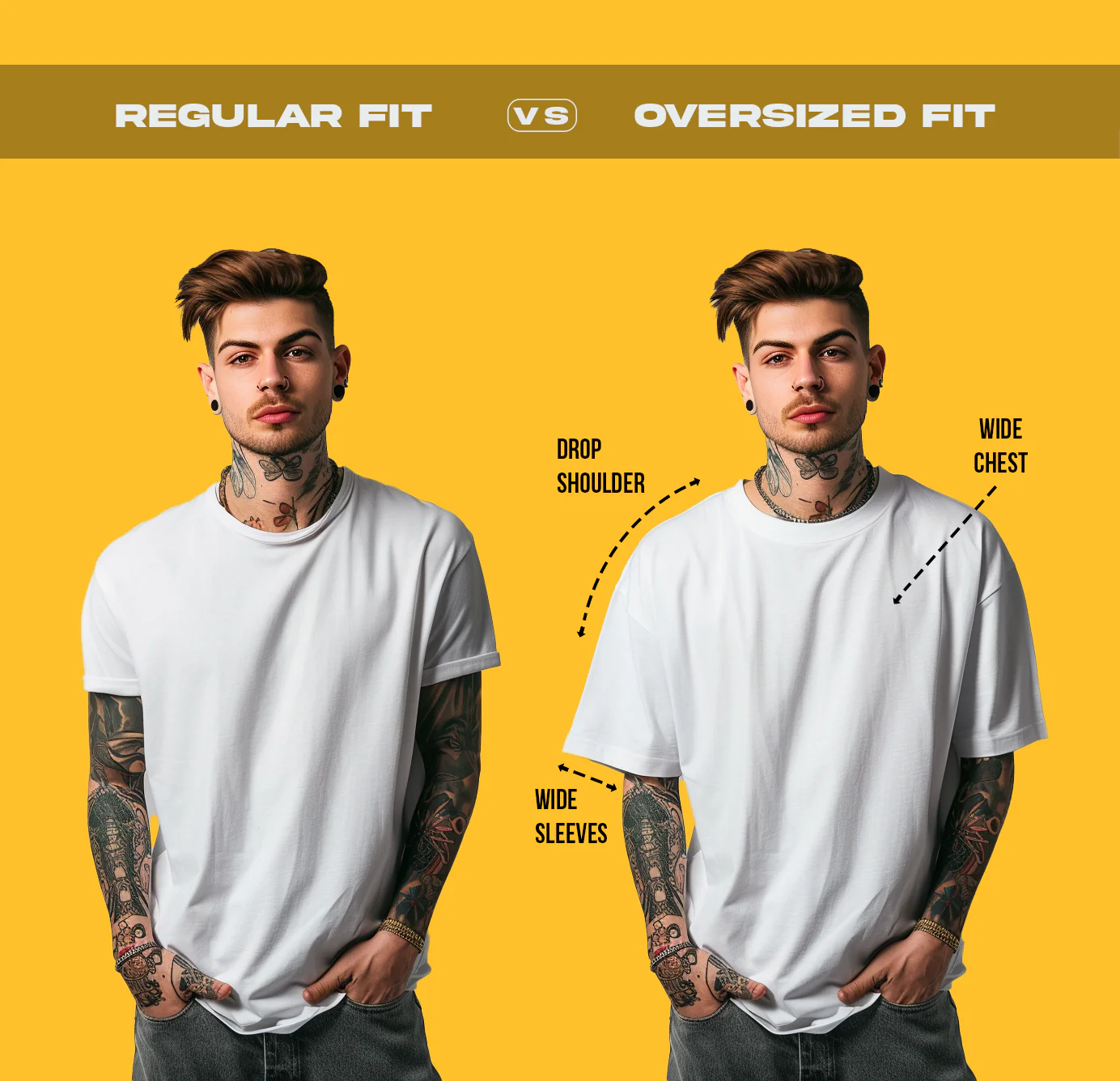
3. Sleeve design: dual innovation of function and aesthetics
The sleeve structure is the key distinguishing point between the two T-shirts. The sleeve depth of ordinary T-shirts is usually 12-14cm, and the sleeve height is 5-7cm, ensuring that the shoulders do not shift when the arms move. The drop shoulder T-shirt adopts an innovative sleeve design:
- Deepened sleeve: up to 18-22cm, forming drapes
- Increased sleeve length: 3-4cm longer than ordinary ones
- Wide cuffs: 25%-30% increase in circumference
Although this design sacrifices some sports functionality (large upper limb movements such as badminton will be restricted), it brings a unique sense of fashion. Laboratory tests show that the static aesthetics score of the drop shoulder sleeve is 47% higher than the ordinary style (data from the Fashion Engineering Research Laboratory of the University of Tokyo).
4. Fabric selection: Differential evolution of performance requirements
The fabric preferences of the two types of T-shirts show obvious differentiation:
| Parameters | Ordinary T-shirt | Drop shoulder T-shirt |
|---|---|---|
| Mainstream weight | 160-200g/m² | 220-300g/m² |
| Common materials | Combed cotton (85%) | Ring-spun cotton/blended (72%) |
| Elasticity requirements | 5%-8% spandex | 3%-5% spandex |
| Post-processing | Pre-shrinkage treatment | Distressed treatment |
High-end drop shoulder T-shirts generally use double yarn knitting technology, which increases the thickness of the fabric but maintains good breathability. For example, Supreme’s classic Box Logo model uses 24-needle double yarn cotton, which not only maintains the silhouette but also improves durability.
5. Style positioning: the collision of street culture and classic aesthetics
From the perspective of cultural semiotics, the two T-shirts represent different fashion languages:
Ordinary T-shirt:
- Workplace adaptability: ★★★★☆
- Formality: Business casual
- Style label: simple, decent, timeless
Dropped shoulder T-shirt:
- Street attribute: ★★★★★
- Trend index: avant-garde
- Cultural association: hip-hop, skateboarding, Japanese Harajuku
It is worth noting that in the field of luxury goods, “hybrids” have appeared – such as Balenciaga’s “Formal Dropped Shoulder T-shirt”, which combines business stripe elements with oversize style, and is priced as high as $890 but is still quickly sold out, reflecting the market’s acceptance of new forms.
(Due to space limitations, the following is a brief outline)
6. Complexity of matching
- Ordinary style: 3 basic matching rules
- Drop shoulder style: Pay attention to the proportion balance (wide on top and tight on bottom principle)
7. Price range
- The cost of ordinary style mainly comes from fabric (65%)
- The process cost of drop shoulder style is higher (40%)
8. Production process
- The scrap rate of drop shoulder style is 15% higher than that of ordinary style
- Special cutting equipment is required
9. Consumer group portrait
- Ordinary style: 68% over 25 years old
- Drop shoulder style: 82% between 18 and 30 years old
10. Fashion cycle
- Ordinary style: Stable demand
- Drop shoulder style: Greatly affected by trends
FAQS
1.What’s the main design difference?
Drop shoulder T-shirts have lowered seams (5-8cm below natural shoulders), while ordinary T-shirts align with the shoulder line.
2.Which is more comfortable?
Drop shoulder styles offer 30% more movement freedom and reduce underarm friction, but may restrict athletic movements.
3.How do sleeve designs differ?
Drop shoulder sleeves are deeper (18-22cm) with wider cuffs (+25-30%), while ordinary sleeves are shorter (12-14cm) for better mobility.
4.Which fabric is heavier?
Drop shoulder T-shirts use thicker fabrics (220-300g/m²) like ring-spun cotton, while ordinary styles are lighter (160-200g/m²).
Conclusion
The choice of drop shoulder T-shirt or ordinary T-shirt should be based on specific needs: choose drop shoulder for comfort and fashion, and choose ordinary style for versatility and practicality. It is recommended that consumers establish a “7:3” wardrobe ratio (7 regular items + 3 designer items). Brands can adjust product mix for different channels – shopping mall stores should maintain the dominance of classic items, while trendy stores should increase the proportion of dropped shoulder items. Future trends show that the intelligent adaptive version may combine the advantages of both, and achieve the effect of multiple wearing of a T-shirt through temperature-sensitive memory fibers.





